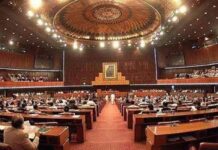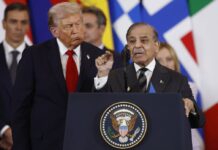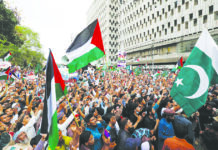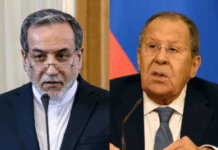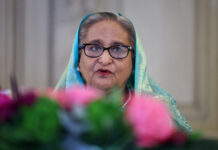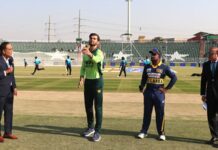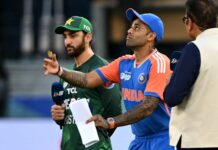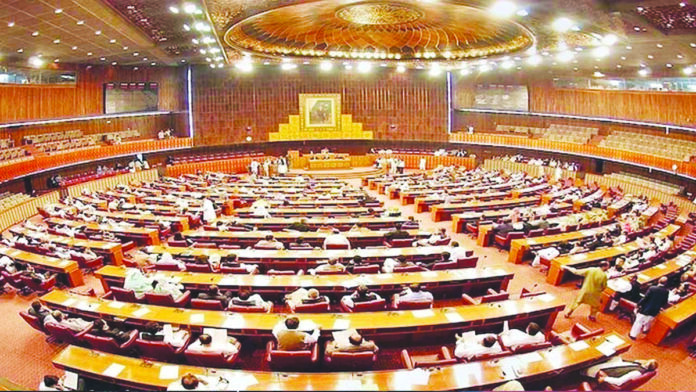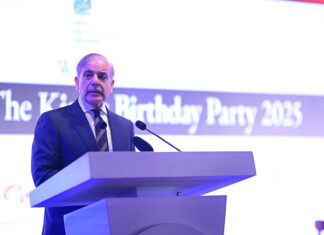AT PENPOINT
A momentous vacancy has occurred, in that the term of office of the President has expired, but the incumbent has not vacated it, because, unlike with other offices, he is not supposed to vacate until his successor takes over, which is symbolized by his taking oath of office.
Like the British monarch, the President ‘reigns but does not rule.’ However, while he has no powers, being bound to exercise his functions in accordance with the advice of the Prime Minister, he is the sole person at which all the three components of the government come together.
He should not be assumed to be based on the British monarch, but on the Viceroy of India, who was based on the British monarch. The East India Company, when it got into the business of ruling, established three Presidency provinces, of Calcutta, Madras and Bombay. Eventually, the Governor of the Calcutta Presidency was named Governor-General and Viceroy. He was the only Viceroy in the British Empire, and he was both a representative of the monarch and stood in his or her stead.
This was important for an empire with more than 500 princely states, many of which had treaty relations between the ruling dynasty and the monarch. It was because of one such treaty that, when Wajid Ali Shah was deposed as King of Oudh in 1856, his mother, brother and heir apparent went to the UK to see Queen Victoria. The Indian Mutiny broke out in 1857, and Oudh stayed annexed. It must be remembered that Oudh was a huge princely state, and the Viceroy was usually enough for other nawabs or maharajahs.
The combination of the Governor-Generalship and the Governorship of Bengal was abolished in 1853, and before that the arrangement had been additions to the presidencies to be put under lieutenant-governors. Thus Oudh and Punjab were absorbed as lieutenant-governorships, and only later became governorships. Sindh was originally part of the Bombay Presidency, until it became a province in 1932. Indeed, ,ost. if not all, of the differences between the Punjab and Sindh provincial governments have been inherited from the different presidencies they originated in.
Perhaps the main distinction between the presidential and parliamentary forms of government has been that the former separates the offices of head of state and head of government. Whereas the head of state is the titular head of all three branches of government, the head of government is head of the Executive Branch. In presidential systems, the head of government is also head of state.
However, he is usually excluded from the Legislative and Judicial branches, except in a ceremonial role. Pakistan’s head of state is actually part of the Legislature, for not only is passage by both Houses required, but also the President’s assent. That assent in Pakistan has bee diluted to merely being able to delay legislation. If he does not accord assent within 14 days, assent is deemed to have been granted anyway. He can send it back for reconsideration, recording why he objects. So far, all bills sent back for reconsideration have been passed without any of the suggested amendments.
Another interesting imitation of the British monarch is the annual Speech from the Throne. Some would liken it more to the annual State of the Union address made by the US President. That itself was an imitation of the Speech from the Throne. It could be said that the parliamentary system’s president is like the British monarch in the 19th century, and a presidential system’s president like the British monarch in the 18th century, when the USA won independence.
The presidency is a relic of the colonial past, but it is also a powerful symbol of constitutional rule. Any fiddling is at the peril of upsetting the concept of Pakistan as a constitutional parliamentary democracy.
The President is also head of the Executive, for the provincial governors are his personal representatives, and all actions of the government are taken in their names. All actions are the result of the advice of the PM or provincial CMs, and his influence remains informal.
He is much more involved in the Executive than in the Judiciary, where his role is restricted to appointing and swearing in Supreme Court judges. He has a particular link to the armed forces, whose Supreme Commander he is, though his ceremonial role seems restricted to granting commissions in all three services, and formally appointing the service chiefs.
It is perhaps because of this that every military ruler has also been President. The path to the Presidency for military rulers has not exactly been smooth, and only Gen Yayha Khan took over as President. Even Gen Ayub Khan only replaced the Prime Minister, leaving Iskander Mirza as President initially. He had to resign. Ayub then took over.
Under the 1962 constitution, he was elected only in 1965, but resigned before completing his five-year term. Instead of handing power to the National Assembly Speaker, as the Constitution specified, he handed over the the Commander-in-Chief, Gen Yahya Khan, who also declared himself Chief Martial Law Administrator.
Yahya never had a term, because he never let any electoral body meet. He resigned after the 1971 War made it clear that the armed forces were close to mutiny if, as he wished, he had tried to carry on. He was replaced by Zulfikar Ali Bhutto as President and CMLA, though he relinquished the office when the 1973 Constitution came into effect on 14 August 1973, and he became PM. The then Speaker of the National Assembly, Fazal Elahi Chaudhry, became President.
He became the first President of Pakistan to complete his term, remaining in office even though Bhutto was removed by a military coup, and COAS Gen Ziaul Haq became CMLA, but not President. When Chaudhry’s term came to an end in August 1978, he remained in office a month longer, until Zia took over.
Zia was deemed elected President by virtue of the December 1984 referendum, and thus he too died with his term incomplete. Ghulam Ishaq Khan became acting President, and was subsequently elected to the post, after the 1988 election. He too did not complete his tenure, resigning to pave the way for the 1993 elections. After those elections, the PPP’s Farooq Leghari was elected, dismissed the PPP government, but then resigning in December 1997 over the judiciary. Rafiq Tarar was then elected, but shorn of the dissolution power. He remained in office after the 1999 coup, resigning in June 2001 so that Gen Pervez Musharraf could take over.
Musharraf was elected President by the outgoing assemblies in October 2007, but had to resign after the 2008 elections, when he position became untenable, and the election in September 2008 was won by Asif Zardari.
He not only oversaw the returning of the post to a ceremonial one, butwas only the first to leave office on completion of the tenure for which he was elected. His succehe idea of the country as a conssor, Mamnoon Hussain, was elected in July 2013 and left in September 2018, when his tenure ended. The incumbent was elected then.
It might be noted that, because there is no vice-president in the sense of someone to serve out the remainder of a tenure, there is no presidential election season, and every time there is an overstay, the new incumbent gets a full five years, and future elections take place then. To take the present case, the election will be held 30 days after general elections, whenever they are held.
The presidency is a relic of the colonial past, but it is also a powerful symbol of constitutional rule. Any fiddling is at the peril of upsetting the concept of Pakistan as a constitutional parliamentary democracy.

